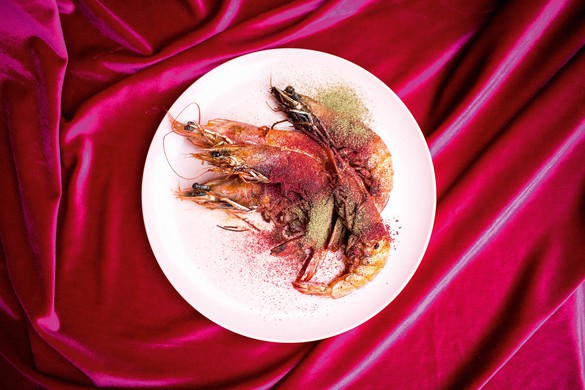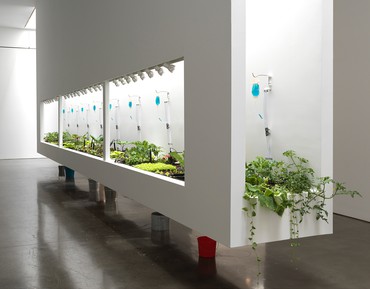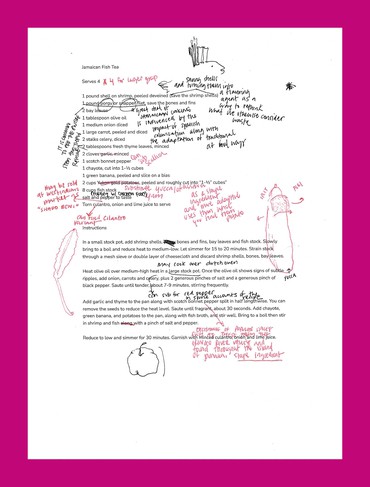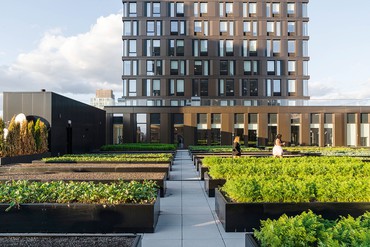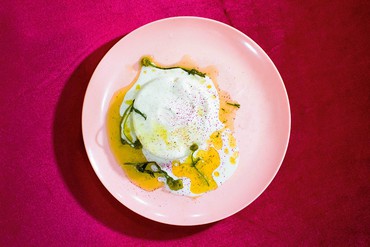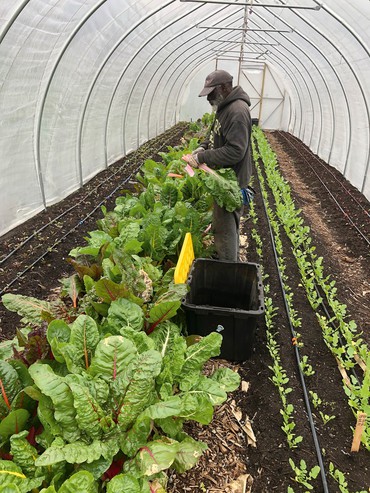
Chef and artist DeVonn Francis is reshaping the culinary scene as we know it. He is the founder of Yardy World, which is a one-of-a-kind hospitality company. Not constricted by having a brick-and-mortar location, Yardy World has the flexibility to navigate spaces in a way that utilizes food to authentically engage with people and their stories and identities. Photo: Michael James Fox
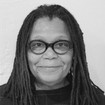
Linda Goode Bryant founded Just Above Midtown (JAM), the first gallery to show work by African American and other artists of color in a major gallery district, in New York (1974–86). In 1995 Goode Bryant began making documentary and experimental films, which led her in 2009 to create Project EATS, a work comprised of a growing network of community-based food systems supporting low-income individuals and families throughout New York City.
DeVonn FrancisThe last time I saw you, you were running between three meetings—
Linda Goode Bryant[Laughs] It was so terrible. It continues to be busy, Project EATS. We continue to provide free food bags to people in the communities where we work, and we’re about to expand to the third community, which is in the Belmont section of the Bronx. So we’re in Brownsville in Brooklyn, we’re on the Lower East Side in Manhattan, and now we’ll be in Belmont in the next few weeks, I believe. It’s a whole new world for us, an exciting one. It’s been truly fulfilling this year because as a farm, we were an essential service in the pandemic, which allowed us to keep operating the farms and provide free food bags. And our relationship with residents has become deeper and deeper.
And then I’m hell-bent on heightening the elements of art in Project EATS in a more concrete way. I’m really excited about that, and at the same time, I feel like I’m on this treadmill and the off button isn’t working as I try to keep up with everything we do at Project EATS.
DFHow did you find your way to the location that’s opening in the Bronx in a few weeks?
LGBWe have a partnership with St. Barnabas Hospital. When they were building a new medical and residential building on their campus, they heard about Project EATS and wanted to explore us having a rooftop farm there, which we now do. It’s been open just about a year and we’re working with their wellness center to provide programming for residents and their patients. In one of the programs we do, Farmacy, we partner with medical providers whose doctors prescribe fresh vegetables as part of the patient-treatment plan—we fill those prescriptions on the site of the provider.
DFThat’s so incredible.
LGBFarmacy came about because I was naive enough to think that if we created farms, people would just come. I wasn’t even paying attention to myself as an example: before covid, 98.9 percent of all the food I ate was prepared food [laughs]. It’s not like I cooked at home. I don’t know how I had that disconnect.
In the first year, some of the folks who did flock to the farm would go, “Oh, I don’t eat that, but I want my kids to.” And the Farmacy idea came up for me as I thought about how we could partner with folks who are essential to the residents in these communities, folks who have some influence and can assist them in moving toward eating fresh vegetables as part of their treatment plan.
DFYou know, we were doing free grocery delivery for a community-based organization in Brownsville and we’d raised some money over the summer in New York at the height of the BLM protests. We were essentially redirecting resources in the supply chain from restaurants, which had a lot of excess because of closures, to these families and communities. I feel like I should have called you immediately. My biggest question for myself and for the team was, How do you make free food distribution sustainable, not only from the aspect of financing it, but also ethically sustainable? Because something I think often is, Yes, let’s feed people, but how do we also give them the tools and resources to teach themselves how to use and implement this knowledge? For me, coming from a restaurant background, that was such a learning curve. The second layer of it is, I would love free food to be widely available, but we live in a society that operates in a capitalistic way, and where, you know, the money has to come from somewhere [laughs]. We were wondering how other organizations were thinking through this. I’d love to hear your thoughts on that.
lGBI’m basically a nationalist at heart, and when I say “nationalist,” I mean Black nationalists from the late 1960s, 1970s. I’m one of those. What does that mean? I’m very much about self-sufficiency: how do we create the things we need that will enable us to live healthy and thrive? So from that perspective, I’ve always been interested in local currencies. One of the ways I hope we’ll address what you’re talking about is to create local currencies in communities. Local currencies have been around for a long time.
The system I’m thinking about is one in which you have a local currency that’s afforded to folks who have limited income, and who are unable to purchase all the things they need, available to them at zero to low prices. You then sell it to the general market at a higher price, and that currency has more value than the actual price that’s paid. So market-rate folks are buying currency that’s helping support the folks who have other resources that aren’t financial. Let’s use food establishments as an example: local currency can give food establishments an opportunity to reduce their loss costs. If they don’t sell all that food they’ve prepared, it’s likely they’ll either have to coordinate to try to get one of the nonprofits to pick it up or they’ll end up throwing it out. There’s a lot of waste. We’ll see what happens, but I think we’ll be able to appeal to food establishments with this local currency because while it might be seventy-five cents on the dollar, that seventy-five cents is better than no cents for what they might throw out. And you’re going to be more likely to sell it with this currency because we’re going to develop relationships between people who use the currency and vendors.
DFThis idea of value, and of defining value for yourself, is something I feel like I’m learning the hard and fast way in every conversation I have with any corporate entity. It comes up even just in my own practices, thinking about my family history and the dynamics around how I came to want to have a business that was engulfed in the politics of food. It always harks back to how you center yourself and these ideas of value.
I remember going to Coronation Market in Jamaica for the first time as an adult and looking through the stalls and thinking about how all the produce there was imported from somewhere else, and about the ways in which property and land rights come into play. I think about the conversations I have with my dad or grandfather, who both come from a background of farming, about how their property was taken away or mismanaged and they don’t own it anymore. My dad talks passionately about growing up with chickens and mules and goats and all these different things on his land, and how his grandfather gave him land when he was maybe nine or ten, gave him a small acre and said, This is yours, you can grow what you want. The metaphor of that, as well as the literal implications of being able to declare space and value for yourself in that way, is something that resonates with me and I think about often.
LGBIt’s hard. We’re so inundated with the prevailing beliefs and value systems of the larger society that we lose sight of our own. I grew up in the communities that we farm in and we didn’t have money, but what we did have was creativity, resourcefulness, resilience, and the ability to use what we had to create what we needed, and to see opportunity where other people see nothing. There’s a whole lot of opportunity there, and in creating what you need, you’re not acquiring it, you’re making it. I hope that Project EATS helps to reinvigorate that way of being and thinking and pursuing dreams in the places where we are.
So have you found time to cook the whole time you’ve been working on these projects and ideas?
DFI’ve been cooking some, but I’ve actually been mostly just trying to write and learn. I’ve been talking to a great friend of mine, Jennifer Williams, and she’s been helping me think about business strategy. I’d thought our sessions were going to be “how to,” as in “how to make your entrepreneurial endeavor work.” What I’m realizing in conversation with her is that it really comes from believing in yourself. I’m not trying to sound like a kindergarten poster in a guidance counselor’s room, but honestly, unpacking what that means has been really major for me. I go into meetings and I’m now more aware than ever of the optics of Blackness. There’s something special and important in this moment about being a Black chef, which I have complicated feelings about, but they’re also looking at what distinct things I can bring to the table.
Back to this idea of value: I’ve never had to name it for myself, I’ve always waited for other people to name it for me. So now I’m working to understand that even when I started Yardy World, it was a project through which I wanted to find my way, not just as a Black person but as a queer Black person, in the wake of going to Jamaica and having dialogues with my family about immigration and coming to New York and setting down roots and thinking about food culture. Now I’m realizing the other work I’m doing, what’s always running in the background, is creating a template for other Black people who want to understand what it means to be able to create your own boundaries in terms of what you can do and what you can make. This goes back to what you were saying about resourcefulness and creativity and being able to see opportunity. We’re in a position to have those conversations and to illuminate our experience for others. I didn’t have that guidebook for me when I was thinking about how my career would shape out.
So no, I haven’t been cooking, I’ve just been trying to figure out what kind of framework I want to carry my mission and vision in. For a long time, I thought it was in just dining and events and catering. When Yardy World started I was mostly throwing parties. That’s even how I met you: we catered the office party for the Museum of Modern Art.
LGBYes. And I asked, Who is this chef, what’s his name, where can I find him [laughter]?
DFAnd I’m so happy that we met, because even in that moment I knew there was something else stirring. When I came here to LA, I shot my final video for Bon Appétit for the season. Prior to that, a Haitian company had reached out to me to use their peanut butter, which is called Lavi. It looked great and I decided to use this last video slot to promote their product, but I really didn’t know what the implications would be. When the video came out, the founders were super excited and brought to tears: they did the same amount of sales in a week that they’d previously done in six months.
And it was one of those moments where I was like, Oh my God, right, this is actually what my project and desire is. Yes, it’s cooking, but it’s also a synthesis in a lot of ways. With this peanut butter, they took an ingredient that felt distant or separated from people’s lives and brought these heritage plants and seeds, as well as these foundational ideas of how we care for ourselves, back into the fold for people to become comfortable with and find joy in themselves. This type of work ultimately helps to bring wealth back into communities that are already stewarding and laboring over the land. That’s the thing I love about Project EATS, too. You’re going to the source of it. You’re going to where the labor happens.
LGBI’m curious, does that tie into the website you’re creating? And when you say you’re writing, is your writing connected to your relationship with food or are you seeing different pathways that you’re going down simultaneously right now?
DFWhen the pandemic started to take hold in New York last March, I lost all of my work. We had several events lined up and when they were canceled, I turned to drawing and writing. In the past, I would always draw dishes that I wanted to make, or I’d write about my experiences with my father, growing up in his restaurant, or about experiences I’ve had in the kitchen, spelling out the homophobia or the racism that happened—just basically keeping a diary of how those things made me feel without any real understanding of where the documentation would belong.
So with the website, and the video with the peanut butter company from Haiti, I was like, Oh, wait, the way people are thinking about food is changing and I have to change with it. Even though our strategies might change for how we think about working, our mission has always been the same, and that’s wealth redistribution. That’s being a resource for education. That’s being an archive for the public.
The website is a way for me to familiarize an audience with the products I care about and the people and the labor behind those products. Just in the way you’d go to YouTube and find a cooking video, we want to take that experience but make it specific to the Black diaspora. We want to start conversations about how food ways have changed—to think, for example, about how immigration has affected the way oxtails and curries may look different in London than they do in New York. We want to offer practical knowledge that you can take back to your home and re-create those recipes that we’re making.
The website is also a marketplace. When we create a map of all the farms we care about and all the people we want to highlight, there’ll be links to buy products directly from those people. We’re creating a skill-share-based site that’s not only entertaining but useful in helping people bring sales and resources into their businesses.
LGBSo that’s another key mission of yours: to redistribute wealth, to create opportunities for people to generate income.
DFExactly.
LGBI’m curious about what you’re saying in the context of space and place. Speaking with you, I think about how food itself, just the sensation of certain flavors on your tongue, can put you in a place separate from your physical space. Take the cinnamon toast that my mom used to make when I was a little kid as an example. If I bite into cinnamon toast now—if it has as much butter as she would use with sugar and cinnamon—I’m in her kitchen, I’m smelling that toast toasting. I’m in space, and I’m also in the experience of place in that space. It seems like you conceptualize this website as a space and a place. Are there other ways you’re seeing yourself doing that?
DFThat’s a really good question. I think the digital world lets you invite people from all over into the same place. The idea of a brick-and-mortar destination has always been limiting for me because I want my aunt and uncle in Brixton to be able to experience it without having to jump on a plane, and I want my cousins in Canada to be able to experience it, and in Virginia, and so on and so forth. So how do we create a channel that people actually have access to, without a ridiculous paywall barring them from the place that they want to feel like they’re connected to?
Another way I think about space and place is by bringing together the past and present, in addition to the physical and digital. I’ve always been in love with Yardy World as an archiving project. I’ve recorded my mom’s and grandmother’s and aunts’ and uncles’ voices talking about their experience since I was a teenager. It’s always been a part of my practice. I was inspired by the fact that every Sunday or Saturday morning, my mom would wake up and call her aunt or uncle on the calling cards in Jamaica. This leads to the third way I think about space and place: the local and global. The idea of proximity through voice over the phone was always really important to me because you’re able to meet in the same place in those moments. It’s all about connecting dots.
Do you see Project EATS existing outside of New York?
LGBThat’s always been the vision: if we can do it in New York, we can do it anywhere. When I came to New York, in 1972, the city was in the throes of going bankrupt. It didn’t have any money. It’s interesting to me that even in that time, its real estate values didn’t depreciate. So if you can grow on small plots in New York City and produce high yields, you can farm and grow food anywhere in soil.
Quite frankly, my motto—which I’ve been saying to the board of directors of Project EATS for over a year and a half, and they’re sick of me saying it—my motto is, if Project EATS can support community-based farming beyond New York, I want to be in Haiti by the time I’m eighty [laughs]. So that’s what I’m working toward now: at least positioning Project EATS so that it’s a viable enterprise in the communities we’re in and so that the community residents are skilled in operating and managing these operations. For us, that’s success. Success is when residents in the community are operating, managing, and generating income and wealth through these farms and the rest of the food system that we’re creating.
Social Works: Curated by Antwaun Sargent, Gagosian, 555 West 24th Street, New York, June 24–August 13, 2021
The “Social Works” supplement also includes: “Notes on Social Works” by Antwaun Sargent; “Lauren Halsey and Mabel O. Wilson”; “The Archives of Frankie Knuckles: Organized by Theaster Gates”; “Carrie Mae Weems and Maya Phillips”; “Sir David Adjaye OBE”; “Allana Clarke and Zalika Azim”; and “Rick Lowe and Walter Hood”
